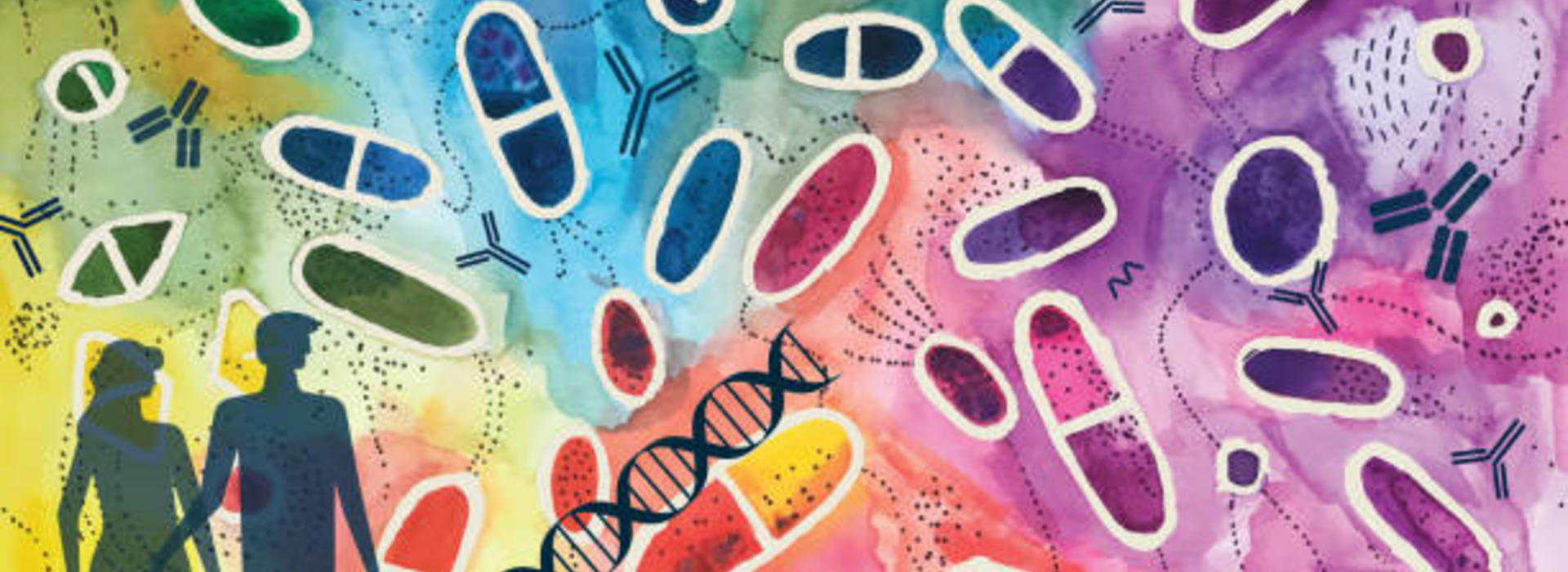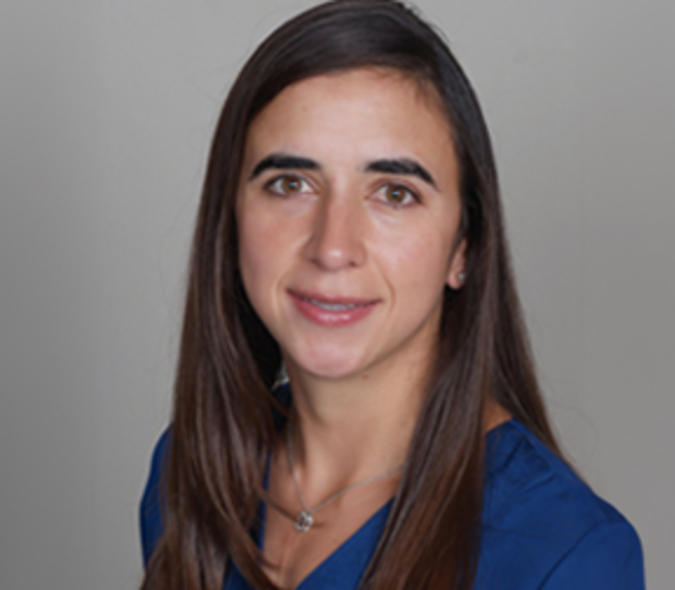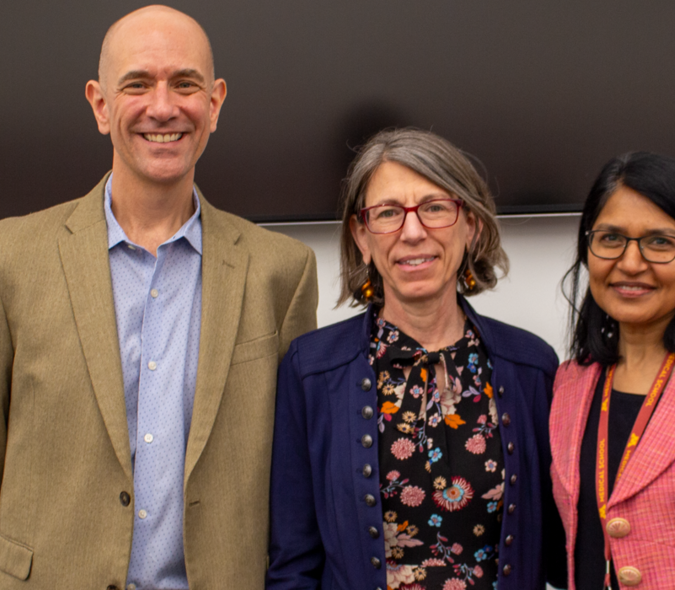
Developing Immunotherapies to Combat Graft-Versus-Host Disease
You may need donor stem cells if you have an issue with your blood cells, as with cancers like leukemia or lymphoma, or other bone marrow failure diseases like aplastic anemia. An allogeneic stem cell transplant uses healthy blood stem cells from a donor in order to replace bone marrow that is not producing healthy blood cells. A donor may be a family member, an acquaintance or someone you don't know. Before undergoing an allogeneic stem cell transplant, the patient will receive high doses of chemotherapy or radiation to wipe out the diseased cells and prepare the body for donor cells. The donated stem cells eventually become the healthy new mature blood cells and the patient gets better.
Normally, blood cells in your immune system protect the body from infection by fighting invaders that don’t belong, like viruses and bacteria. Healthy blood cells do not attack the body’s cells as they recognize a protein on them called human leukocyte antigens (HLA). HLA is like a nametag that identifies a cell as belonging in your body. Except for identical twins, everyone has different HLAs.
After an allogeneic transplant, your body makes new blood cells from the donated stem cells. These new blood cells will have HLA like your donor’s. If the HLA is too different from yours, the donated blood cells will attack your body’s cells. Healthcare providers who perform these transplants test a potential donor’s HLA to find a close match. With graft versus host disease (GvHD) a problem may occur after an allogeneic transplant whereby the donated stem cells graft with the hosts cells and are viewed as an unfamiliar threat.
Regulatory T-cells, also called Tregs, are white blood cells that regulate your immune system response. Tregs regulate how your immune system reacts to substances from outside and inside your body. They help to limit autoimmune disease by checking your body from attacking its own cells. Researchers are studying how to increase the activity of your Tregs to help treat allergies, autoimmune diseases, as well as GvHD.
While the immunosuppressive mechanisms of Treg have been extensively investigated for decades, the mechanisms responsible for Treg cytotoxicity and their therapeutic potential against cancer and infection have been incompletely explored and exploited. Conventional cytotoxic T effector cells (Teffs) are known to be important for adaptive immune responses, particularly in the settings of viral infections and cancer. Treg subsets may also share similar cytotoxic properties with conventional Teffs. Cytotoxic effector Treg (cyTreg) are a heterogeneous population of Treg in the periphery that retain their capacity to suppress T-cell proliferation and activation and migrate to different tissues to ensure immune homeostasis, but also induce cellular apoptosis and kill cancer cells.
There is now a growing repository of data supporting the important role of cytotoxicity in cyTreg for immune regulation and disease control and their potential clinical applications for the treatment of human disease, including cancer, inflammatory disease and GvHD.
Hematology T32 Research Training Program
University of Minnesota’s Division of Hematology, Oncology, and Transplantation T32 Research Training Program seeks to develop future scientific leaders in the disciplines of hematology and transfusion medicine. Post-doctoral trainees pursue a research-intensive program in basic/translational or clinical investigation supplemented by educational and training program activities. Educational activities for postdoctoral trainees will include required coursework in statistics as related to their clinical or basic research interests, attendance at research conferences relevant to their training tracks and enrolling in graduate level courses to consolidate their scientific knowledge. Additional program activities are designed to bolster career development of individual trainees through regular career developmental seminars and monthly research-in-progress meetings.
Jemma Larson, PhD, is a Postdoctoral Research Associate at University of Minnesota and a trainee in the Hematology T32 Research Training Program who aims to understand the potential clinical applications of cyTreg based therapies for the dual treatment of cancer and Graft-versus-Host Disease. Her work is critical for the development of safe and effective targeted therapies for children and adults with blood cancers. Dr. Larson and her colleagues published an article in Frontiers in Immunology focusing on developing immunotherapies to combat GvHD concluding that cyTreg offer an exciting avenue to expand our understanding of Treg biology, as well as the potential to develop safer and more effective Treg therapies for clinical use.
The University of Minnesota Hematology T32 Research Training Program is in its 44th year of funding from the National Institutes of Health with focus on providing an intensive postdoctoral research training experience intended to lead to an academic career that involves hematology-related research. In this Program, trainees will work for two or three years with an expert faculty mentor on a scientifically important research project. Upon completion of the Program, the trainee will be competitive for national funding, such as a K or R award. The Program recognizes that many skills are needed to sustain a career as an independent and funded researcher, and it is designed with this in mind.
Current Need for Training Physicians and Scientists in Hematology
Over the past 45 years the University of Minnesota Hematology, Oncology, and Transplantation (HOT) Division has been at the forefront of training research physicians and PhD scientists. Our T32 trainees have made basic discoveries in sickle cell disease, bone marrow transplantation, coagulation, stem cell biology, and leukemia, while becoming national and international leaders in hematology. Our T32 Research Training Program continues to identify, recruit, and train successful hematology investigators. Despite challenges in funding, the complexities of modern science, and barriers that intimidate promising young investigators, we are confident that our program provides the foundation on which new investigators can build creative, ethical, and productive research careers in hematology.
The American Society of Hematology and the National Heart, Lung and Blood Institute have highlighted the need to train physicians and scientists in basic and clinical research in hematology. Basic research in hematology has been translated into the discovery of imatinib, a type of cancer growth blocker called a tyrosine kinase inhibitor, which has made chronic myelogenous leukemia a chronic disease, the development of chimeric antigen receptor T cell therapy for hematologic malignancies, the development of new oral anticoagulants for thrombosis, gene therapy for hemophilia, curative hematopoietic cell transplants for hematologic disorders, CRISPR-mediated genome editing, and life-saving drugs for producing red cells, white cells, and platelets as well as inducing fetal hemoglobin. These innovative advances now offer hope and excitement for the next generation of hematologists to bring new advances to the bedside of future patients with blood disorders and to continue moving the field forward.
The Hematology research training program at the University of Minnesota is confident that our long-standing tradition of training leaders in hematology research for the last 45 years will continue to produce successful graduates.
Two tracks are typical for entry:
-
Research-focused fellows from the Hem/Onc fellowship are often supported on the grant after being identified in the first year of fellowship.
-
Independent PhD and non-fellow MD postdoctoral candidates who are interested in pursuing hematology-related research.
The University of Minnesota Medical School provides a large and resource-rich environment that promotes the development of research and academic career skills. Within the Medical School, the HOT Division is a research-intensive group that has built world-leading programs in sickle disease, immunotherapy, signal transduction, vascular biology, stem cell biology, bone marrow transplantation, and hemostasis & thrombosis. These and other topic areas are available for trainee research. The ultimate goal of our Hematology T32 Research Training Program is to position trainees to compete successfully for academic faculty positions that focus on hematology-related research.
Dean Patterson, Editor
Division of Hematology, Oncology, and Transplantation
References:
Bolivar-Wagers S, Larson JH, Jin S, Blazar BR. Cytolytic CD4+ and CD8+ Regulatory T-Cells and Implications for Developing Immunotherapies to Combat Graft-Versus-Host Disease. Front Immunol. 2022 Apr 12;13:864748. doi: 10.3389/fimmu.2022.864748. PMID: 35493508; PMCID: PMC9040077.



